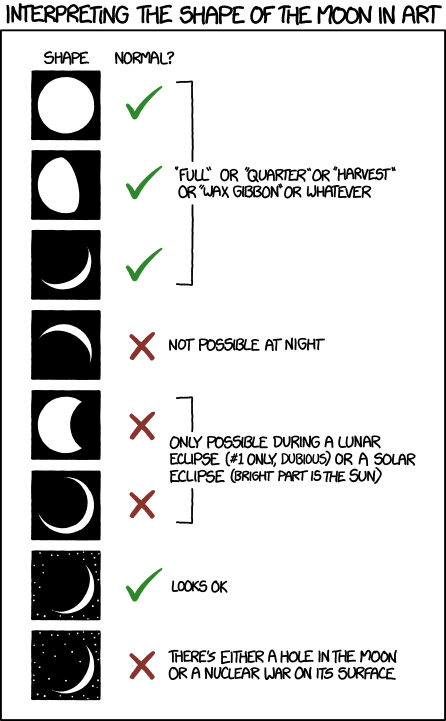A few months ago, I discussed some of the techniques for taking pictures at night. Now that we’re finally into fall and the nights are getting longer, I thought I would focus on some specific techniques to take pictures of the Moon. Unlike “painting with light”, photographing the Moon has different challenges. Sure, you’ll still want a tripod and remote, and your ISO should be relatively low, but if you really want your Moon shots to pop, there are a few more things you should probably know.

The first key difference between taking pictures of the Moon and painting with light is the shutter speed. While you’ll want a long exposure to capture the full extent of your light streaks with the latter, a shorter exposure time will help define the features of the Moon. Instead of appearing as a bright white circle in the sky, you’ll be able to capture the craters and plains of the Moon. You will still want your ISO low for these pictures, as you’re essentially taking photographs of a light source and the lower ISOs are more than adequate to capture that light.
Don’t just shoot the moon by itself, give it an interesting foreground.
Depending on the type of picture you’re trying to shoot, you’ll probably want the foreground to be filled with something other than dark sky. There are two ways to go about this: 1. Take your Moon pictures as it is rising or setting or 2. Use double exposures. Either way, you’ll want the Moon to be the subject of whatever you’re photographing, so remember to try and obey the “rule of thirds” when you can. Of course, maybe you’re interested in a close-up of the Moon’s surface. If so, you will want to keep your shutter speed a lot faster (and bump up your ISO as a result). The reason for this is due to the rotation of the Earth and Moon. Even if you focus on the moon with a superzoom lens, your picture might turn out blurry because your subject has moved.
If you get a chance, take some pictures of a Lunar Eclipse!
Finally, consider the many variations of the Moon when taking your pictures. From Supermoons to Lunar eclipses, there are some very interesting phases the Moon can go through that you might want to take advantage of. Whether it’s the sliver of the Moon just before it becomes new or the bright and spectacular full Moon, you’re likely to get a nice and crisp picture if you follow the above techniques.
As always, have fun!
– Benjamin M. Weilert
